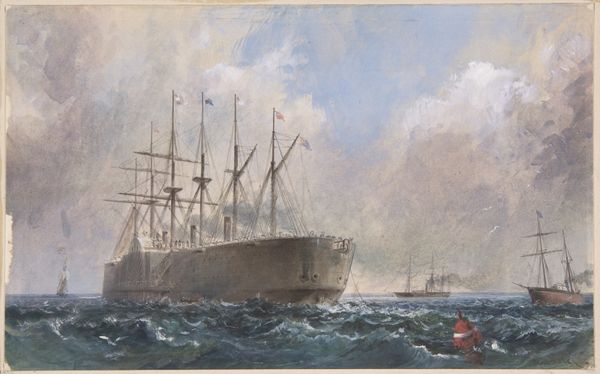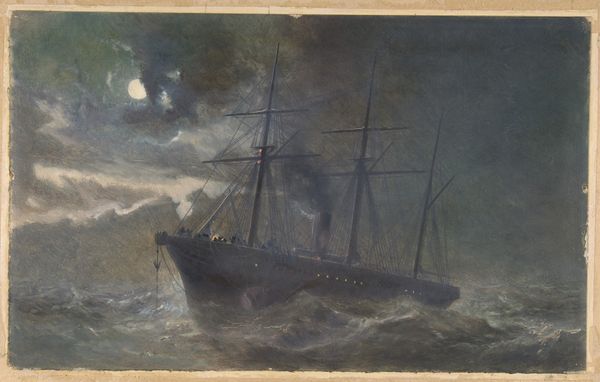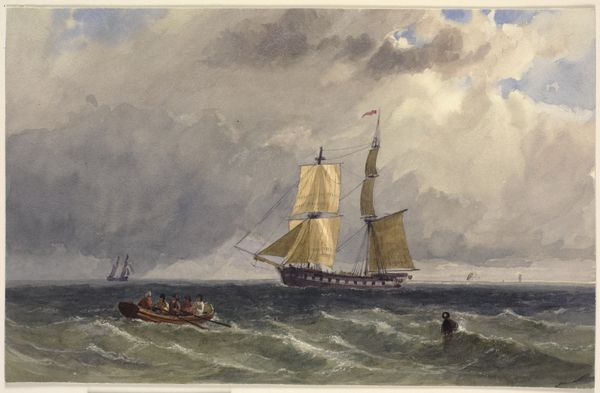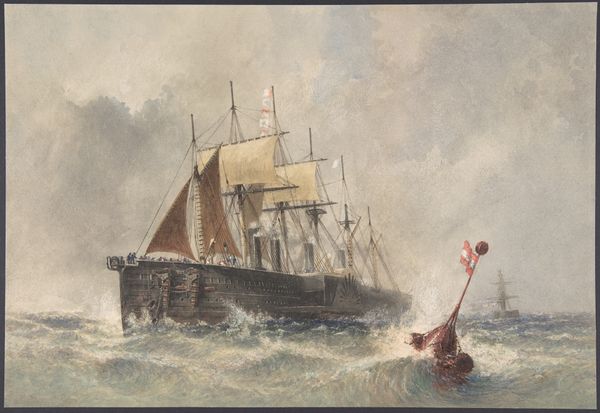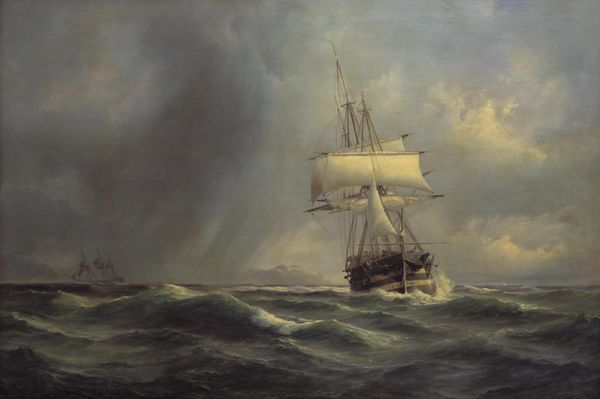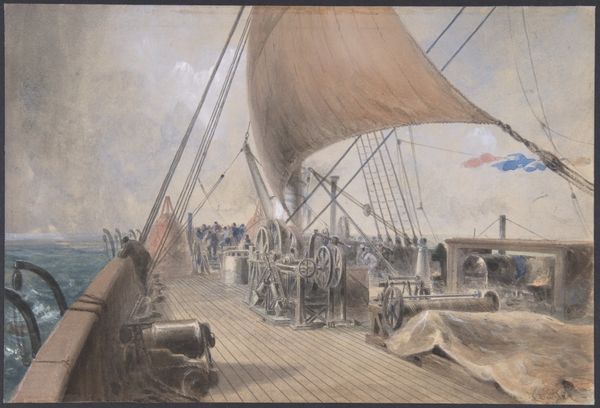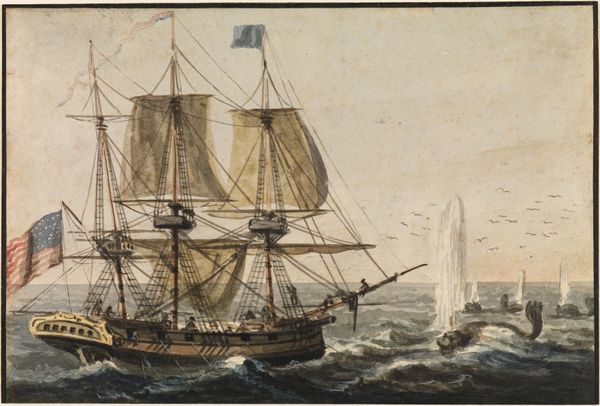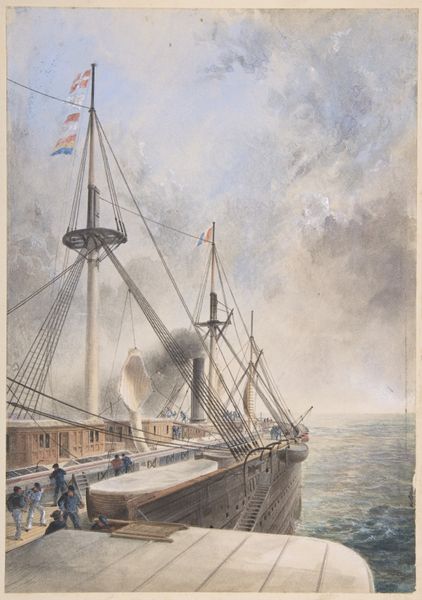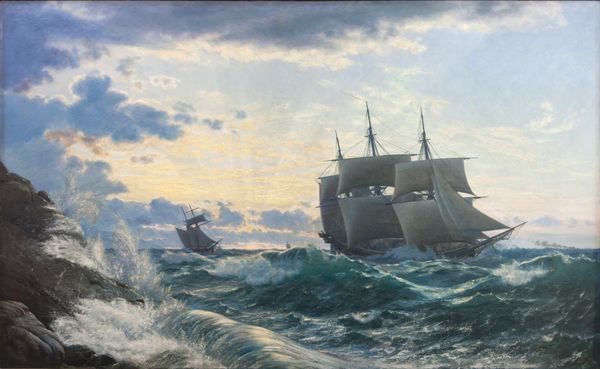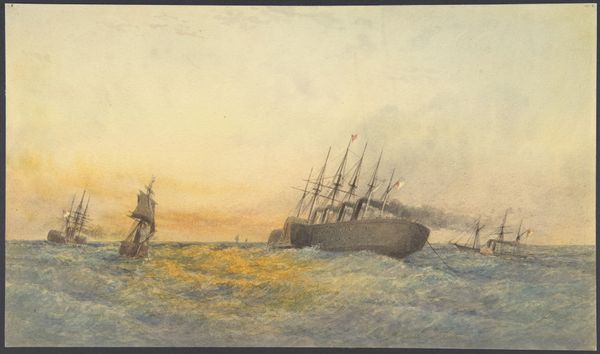
H.M.S. Agamemnon Laying the Atlantic Telegraph Cable in 1858: a Whale Crosses the Line 1865 - 1866
0:00
0:00
Dimensions: Sheet: 6 15/16 × 9 13/16 in. (17.7 × 25 cm)
Copyright: Public Domain
Curator: Robert Charles Dudley’s watercolor and gouache artwork, painted between 1865 and 1866, is titled "H.M.S. Agamemnon Laying the Atlantic Telegraph Cable in 1858: a Whale Crosses the Line.” It is presently held at the Metropolitan Museum of Art. Editor: Immediately, the scale disparity jumps out – the colossal warship dominating the scene juxtaposed with the relatively small whale breaching the water's surface. It establishes a very clear power dynamic, doesn’t it? Curator: Yes, and that’s telling. The leviathan warship "Agamemnon" embodies the industrial and colonial ambition of the Victorian era, specifically the laying of the transatlantic cable which this commemorates, while the whale represents the untamed, natural world being crossed over by progress. Editor: I am intrigued by Dudley’s palette. The muted, almost monochromatic scheme reinforces the somber mood, which conflicts slightly with the ambitious feat being documented. It's like a landscape drained of vibrancy, almost apprehensive about its own future. Curator: That subdued palette contributes to the overall visual cohesion. Notice how Dudley uses tonal gradations to convey depth and atmosphere. The ship and water meld almost seamlessly, united, even monolithic, against the relatively clear but similarly colored sky. It presents technology as dominant force within nature. Editor: You're right about dominance. The ship is rendered with an astonishing precision, compared with the much softer lines used to suggest the ocean. This contrast suggests the rigid control over the chaotic waters achieved through technology. A rather didactic contrast, wouldn't you say? Curator: Quite. This representation of nature in subordination reveals underlying ideologies, showing how nineteenth-century industrial powers justified the exploitation of natural resources. And this cable laying operation made instant communication a new capability. A very aggressive act by British interests in global expansion. Editor: I found myself more preoccupied with the feeling evoked. Despite its precision and visual grandeur, the artwork generates an unexpected tension— a collision between technological optimism and the unpredictable force of nature—with the little whale as a lonely exclamation mark in a big operation. Curator: Precisely. So, in closing, looking at "H.M.S. Agamemnon," it reminds us of the complicated relationship between technological advancement, the natural world, and the power structures of history, where our aesthetic reading highlights this tension, don’t you agree? Editor: Absolutely, and perhaps underscores how that moment also speaks eloquently about the present moment, regarding nature, art and technology today.
Comments
No comments
Be the first to comment and join the conversation on the ultimate creative platform.
